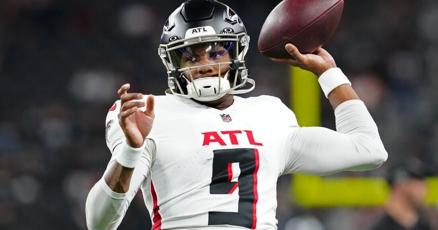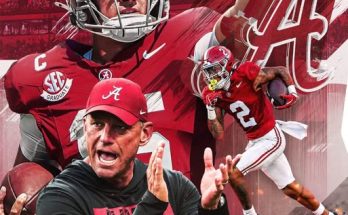The NFL owners are no strangers to luxury. From private jets to multimillion-dollar mansions, these are the billionaires who run the biggest sports league in America. But even for them, the luxurious confines of The Breakers Palm Beach stand out. This world-renowned resort, nestled in the heart of Florida’s exclusive Palm Beach, provides an opulent backdrop for some of the most important off-field decisions in the NFL. For the owners, it’s a chance to step away from the gridiron, but more importantly, it’s an environment where they can continue to shape the future of the league.
As the sun begins to set on the final day of meetings at The Breakers, the elite owners, executives, and league officials reflect on a productive few days of decision-making, negotiation, and strategizing. The resort, with its luxurious setting and stunning views of the Atlantic Ocean, offers the perfect environment for high-level discussions that will shape the future of the NFL for years to come.
In this article, we’ll take a deeper look at the significance of these meetings, why they take place at The Breakers, and what key issues were discussed in this year’s gathering. With one more day to go, the owners are poised to make critical decisions that could have lasting ramifications for the league.
The Setting: The Breakers Palm Beach
Nestled on 140 acres of oceanfront property, The Breakers Palm Beach is a stunning landmark that represents the pinnacle of luxury. With its Italian Renaissance-style architecture, its sprawling grounds, and its rich history, The Breakers is more than just a luxury resort; it’s a statement of wealth and prestige.
This lavish destination is home to sprawling suites, private cabanas by the pool, gourmet dining, and world-class golf. But it’s not just the resort’s elegance that draws the NFL owners to it each year—it’s the quiet seclusion and the refined atmosphere that allow for the kind of intimate discussions required at these high-level meetings.
For the owners, The Breakers serves as a place where they can convene in style, make major decisions, and enjoy the kind of privacy that allows them to speak candidly. No doubt, this luxurious setting fosters the kind of atmosphere that leads to some of the most important conversations in sports.
A Legacy of Luxury and Power
The history of The Breakers is as rich and storied as the NFL itself. Opened in 1896 by industrialist Henry M. Flagler, The Breakers quickly became the epitome of wealth and opulence, attracting some of the wealthiest families in America. Over the years, it has hosted political leaders, royalty, and celebrities. The owners of the NFL, many of whom belong to some of the most influential families in the country, feel right at home in such an exclusive venue.
For these owners, The Breakers is a place to not only relax but also to continue the growth of the NFL as a global brand. The serene environment allows them to focus on long-term goals without distractions, something they may not always be able to do in the hustle and bustle of their everyday business lives.
What Happens Behind Closed Doors?
The NFL owners’ meetings are more than just a chance to enjoy fine dining and luxury accommodations; they are critical moments where the future of the league is determined. Over the course of several days, the owners and top executives gather to discuss major issues affecting the league, vote on important decisions, and strategize for the upcoming season and beyond.
League Expansion and International Growth
One of the most pressing issues at the current meetings is the ongoing push to expand the NFL’s global footprint. The league has already made strides in expanding internationally, with games in London and Mexico City and a growing fan base in Europe and beyond. However, owners are beginning to look beyond simply playing international games. They are discussing the possibility of establishing permanent franchises in cities like London or even further-reaching places like Germany or Japan.
The primary discussions around international expansion center on logistics, revenue-sharing, and fan engagement. The owners are debating whether or not it’s feasible to support a team in a foreign market that requires long-distance travel for all other teams, or how to engage with a fanbase that may not have grown up watching American football. The conversations involve careful considerations of market research, broadcasting rights, sponsorship deals, and even potential conflicts with existing U.S.-based teams.
Furthermore, there’s the question of whether an international division would require changes to the NFL’s structure, particularly the scheduling system and the postseason format. Would teams in foreign markets need to be placed in a separate division? Could they compete in the playoffs? These are complex logistical issues that the NFL owners will need to address over the next few years.
With a $12 billion per year media rights deal with broadcasters, the league’s owners understand that international expansion isn’t just about growing the game—it’s about making it a bigger global business. For many, the opportunity to reach new audiences is an enticing one.
Revenue Sharing and the Salary Cap
Another ongoing issue for the NFL’s owners is the league’s revenue-sharing model. The NFL has long been known for its competitive balance, which is achieved, in part, through shared revenues. However, as the league’s revenue continues to increase, questions arise over how the money is distributed, especially among the league’s wealthiest and smallest-market teams.
With a growing television contract, more lucrative sponsorship deals, and increased revenue from the sale of merchandise and tickets, the owners must discuss how to allocate this money. While the owners of teams like the Dallas Cowboys and New England Patriots are among the wealthiest in sports, the owners of smaller-market teams, such as those in Jacksonville, Cincinnati, and Buffalo, are advocating for a fairer distribution.
At the center of this conversation is the salary cap. While the NFL’s salary cap has long been in place to ensure that teams of all financial backgrounds can compete, some owners feel that the cap is becoming too restrictive, particularly with the growing revenue. Others argue that increasing the cap would just further increase the gap between the haves and the have-nots. A potential solution could be a restructuring of the cap system, offering teams more flexibility while ensuring that smaller-market teams don’t lose their competitive advantage.
Player Health and Safety
In a league that is constantly evolving, one of the most contentious discussions at the owners’ meetings centers around player health and safety. The conversation around head injuries, especially concussions, has been ongoing for years. As the NFL continues to deal with the long-term effects of concussions, including the growing body of research on CTE (Chronic Traumatic Encephalopathy), the owners have been forced to navigate the complexities of player safety and the risks associated with the game.
The owners face pressure from various fronts—former players, advocacy groups, and the public—urging them to implement even stricter safety measures. These conversations involve rule changes, such as making helmet-to-helmet hits illegal, improving concussion protocols, and ensuring better long-term healthcare for retired players.
But these discussions also touch on the economics of the game. Injuries, particularly to key players, can drastically affect a team’s performance, and by extension, its revenue. The owners must balance the desire for a safer game with the realities of a sport that is inherently dangerous. Finding the right compromise is crucial for the long-term health of the league and the players.
The Future of Broadcast Rights
As the NFL’s popularity continues to soar, the league’s broadcast rights are also becoming a key topic of discussion. The value of broadcasting NFL games, especially as more people consume media on digital platforms, is skyrocketing. The competition between traditional networks like NBC, CBS, and Fox, as well as streaming giants like Amazon, Apple, and YouTube, is fierce.
The NFL owners are discussing how to maximize the revenue from these deals and whether the league should take a more active role in its media future. For example, the possibility of streaming games exclusively on platforms like Amazon Prime or Apple TV+ is a topic of heated debate. These streaming platforms are willing to pay billions for the rights, but this could shift the way the league and its fans experience the game.
At the heart of these discussions is how the owners can maintain the unique relationship the NFL has with television networks while exploring new and innovative ways to engage viewers. With Thursday Night Football already being streamed exclusively on Amazon, the door is open for further changes that could impact how games are broadcast in the future.
The Legacy of NFL Ownership
As the final day of meetings approaches, the NFL owners reflect on their role not just as business magnates, but as the custodians of one of the most beloved sports leagues in the world. Each decision made at these meetings has the potential to reshape the future of football, affecting the game, its players, and the fans who passionately follow it. The stakes are high, but with so much wealth, influence, and power in the room, the owners are uniquely positioned to steer the NFL toward continued success.
At The Breakers, amid the luxury, the serene views, and the quiet ambiance, the owners finalize their strategies, aware that their decisions in this moment will echo through the NFL for years to come. As the meetings wrap up, one thing is clear: the future of the NFL remains in good hands—at least, for one more day at The Breakers.



